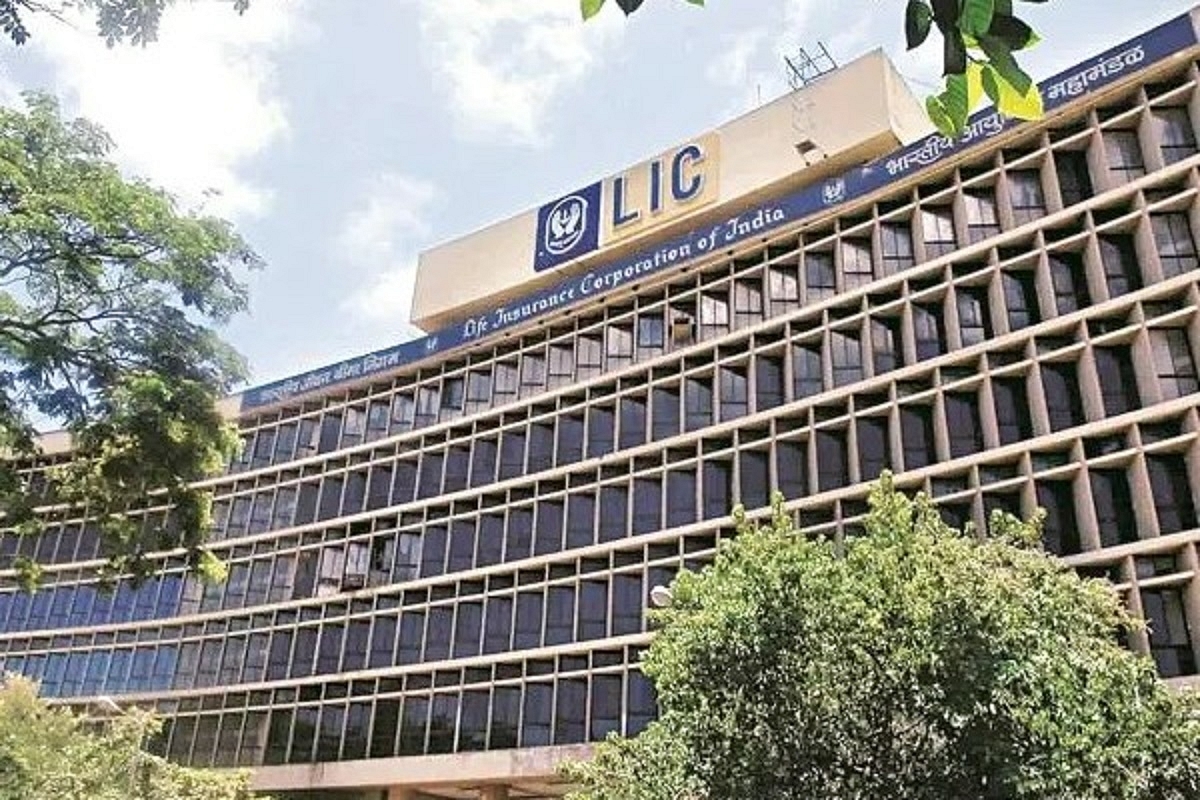Economy
Why Government Should Consider Delisting LIC
- Delisting now is a better idea than costly recapitalisation later. It is time to think clearly on LIC now rather than later.
- LIC and the taxpayer deserve better.

LIC is better off remaining a state actor than a commercial actor who is partly state.
The Union government should consider taking the Life Insurance Corporation (LIC), which was listed last year in May at a discount to its issue price of Rs 949 a share, back into its fold.
The share is faring even worse right now.
The share is currently quoting at Rs 567-568 (27 February, around noon), which is more than 40 per cent below the initial public offer (IPO) price.
Even policyholders and retail investors, who got generous discounts on the issue price, are sitting on huge losses, though their total individual losses in absolute terms may be small.
Even at the issue price, the government got just over Rs 20,000 crore by divesting a 3.5 per cent stake in the corporation.
Since, sooner or later, it will have to dilute to 75 per cent, it is difficult to see what the real benefit is remaining listed.
The more the supply of new shares, the lower the possibility of getting decent valuations.
Delisting would make sense for five simple reasons:
One, LIC is not just an insurance company; it is also a policy arm of the government.
It has, in the past, bailed out many public floats of government shares, and, moreover, serves as the vehicle through which subsidised insurance and pension services for the poor can be rolled out (PM Vaya Vandana, for example).
In short, LIC is “state” in the real sense of the term.
Two, the more the dilution in LIC shares, the less it will be available as an instrument of policy for the government.
There are thus only two real options: one is to commit to privatise LIC fully at some future date so that it learns to compete commercially with private sector rivals; the other is to retain it as a fully-owned government arm.
There nothing in-between that will work.
Three, the money that can be raised from further divestment is paltry.
LIC’s current market value is Rs 359,000 crore.
If government were to divest another 45.5 per cent to bring its ownership down to 51 per cent, it can at best raise just over Rs 1.6 lakh crore.
This is equal to one month’s worth of GST revenues.
Is this income really worth it if the longer-term future of a government-owned entity is lower and lower valuations in a competitive world?
Four, delisting is almost a zero-cost option for the government.
If a 3.5 per cent sale got the government just over Rs 20,000 crore, delisting even at a hefty premium to the current market price will not cost much.
In fact, it can be zero, if the LIC does the buyback from its own cash flows.
Five, a delisting, if done quickly, will reduce the government’s need to recapitalise the corporation whenever solvency levels fall below the required levels.
As a sovereign entity, LIC’s capital needs will be far lower than if it were a commercial entity.
The sovereign can always recapitalise at very low cost.
Delisting now is a better idea than costly recapitalisation later.
LIC is better off remaining a state actor than a commercial actor who is partly state.
The in-between state – neither fully commercial nor fully a policy arm - has destroyed value in every government-owned bank or public sector enterprise.
It is time to think clearly on LIC now rather than later. LIC and the taxpayer deserve better.
Support Swarajya's 50 Ground Reports Project & Sponsor A Story
Every general election Swarajya does a 50 ground reports project.
Aimed only at serious readers and those who appreciate the nuances of political undercurrents, the project provides a sense of India's electoral landscape. As you know, these reports are produced after considerable investment of travel, time and effort on the ground.
This time too we've kicked off the project in style and have covered over 30 constituencies already. If you're someone who appreciates such work and have enjoyed our coverage please consider sponsoring a ground report for just Rs 2999 to Rs 19,999 - it goes a long way in helping us produce more quality reportage.
You can also back this project by becoming a subscriber for as little as Rs 999 - so do click on this links and choose a plan that suits you and back us.
Click below to contribute.
Latest